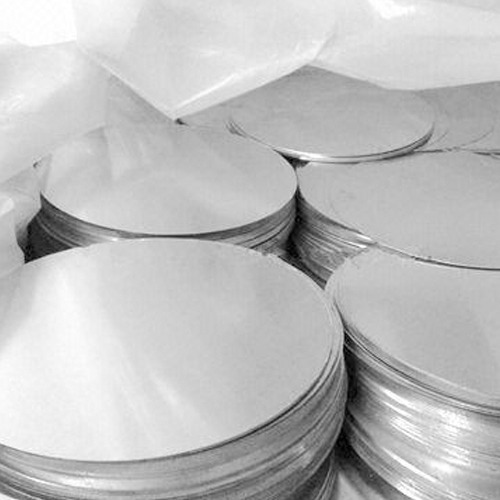What Is Stainless Steel?

Stainless steel is an alloy of Iron with a minimum of 10.5% Chromium. Chromium produces a thin layer of oxide on the surface of the steel known as the 'passive layer'. This prevents any further corrosion of the surface. Increasing the amount of Chromium gives an increased resistance to corrosion. Stainless steel also contains varying amounts of Carbon, Silicon and Manganese. Other elements such as Nickel and Molybdenum may be added to impart other useful properties such as enhanced formability and increased corrosion resistance.
When was stainless steel discovered?
There is a widely held view that stainless steel was discovered in 1913 by Sheffield metallurgist Harry Brearley. He was experimenting with different types of steel for weapons and noticed that a 13% Chromium steel had not corroded after several months. However, the picture is much more complex than this. For a comprehensive view read The Discovery of Stainless Steel.
Does stainless steel corrode?
Although stainless steel is much more resistant to corrosion than ordinary carbon or alloy steels, in some circumstances it can corrode. It is 'stain-less' not 'stain-impossible'. In normal atmospheric or water based environments, stainless steel will not corrode as demonstrated by domestic sink units, cutlery, saucepans and work-surfaces. In more aggressive conditions, the basic types of stainless steel may corrode and a more highly alloyed stainless steel can be used.
Getting the Best out of Stainless Steel
Introduction
Although the vast majority of stainless steel applications work perfectly as intended by the designer and fabricator, there are a significant number of instances where someone, often the end-user, is disappointed by the performance of the material. The causes of these disappointments tend to fall into only a few basic categories. In nearly all cases, a little basic knowledge would have prevented or significantly improved the situation. On the assumption that prevention is better than cure, this short article addresses these issues.
Main Issues
The causes of disappointment can arise at any point in the long supply chain that often applies to a stainless steel project. This helps to explain why problems occur. Getting the appropriate knowledge to all parts of the supply chain is difficult and it only takes ignorance in one small part to create a problem later on. The main issues are:
Importance of surface finish in determining corrosion resistance
Lack of knowledge in this area is a major cause of problems. Most specifiers and designers understand the importance of selecting a grade of stainless steel, for example 1.4301 (304) or 1.4401 (316). But surface finish is at least as important. The subject is fully explored in The Importance of Surface Finish in the Design of Stainless Steel.
Briefly, a bright polished surface gives maximum corrosion resistance.
A directional polish equivalent to the EN 10088-2 2K (Ra = 0.5 micron max), usually produced using silicon carbide (SiC) abrasives, will give adequate corrosion resistance in many severe environments notably heavy urban and coastal ones.
A common surface finish achieved with 240 grit alumina abrasives has been implicated in the corrosion of stainless steel in urban and coastal environments. In some cases, surface roughness Ra values have been measured at well above 1 micron which is known to be inadequate in these environments.
The lack of any specified surface finish on architectural drawings can be the source of the final problem.
If, at any stage of the supply chain, there is any doubt about the appropriate surface finish, specialist advice should be sought.
Importance of post-fabrication treatments
Apart from some specialised processes, welds in stainless steel always result in some degree of heat tint. Heat tint is essentially an oxidised surface which has a reduced corrosion resistance compared to the parent material. Therefore, the normal practice is to carry out some form of post weld treatment to improve the corrosion resistance.
Wherever possible, stainless steel and carbon steel should be fabricated in separate areas of the workshop or better still in separate workshops. Where not possible it is important to clean down machines used for carbon steel before using them for stainless steel. Stainless steel surfaces should be protected with plastic coatings for as long as possible.
It is quite possible for everything to be done well in fabrication, only for the whole project to be spoiled by inappropriate practices on site. The issues outlined in 3. apply just as much to the site installation as anywhere else in the process.
In addition, it must be remembered that what is appropriate for one building material is totally unacceptable for another. For stainless steel it has to remembered that masonry and brick cleaners may contain hydrochloric acid sometimes called muriatic acid. If these fluids are to be used at all near stainless steel, care should be taken to protect the stainless steel surfaces. If splashes occur, they should be immediately washed off with water. Failure to do so will result in serious attack of the stainless steel resulting in expensive rectification costs Importance of choosing correct grade for the application.
This aspect almost goes without saying. It is only this far down in the list because it usually is considered. But if the "wrong" grade has been chosen the consequences can be severe. Some guidelines on material selection are given here.
Cleaning and Maintenance
Some people think that stainless steel's corrosion resistant surface somehow repels dirt and other contaminants. Like any surface stainless steel requires some maintenance. Guidance on this aspect can be found at Cleaning Methods for Stainless Steel